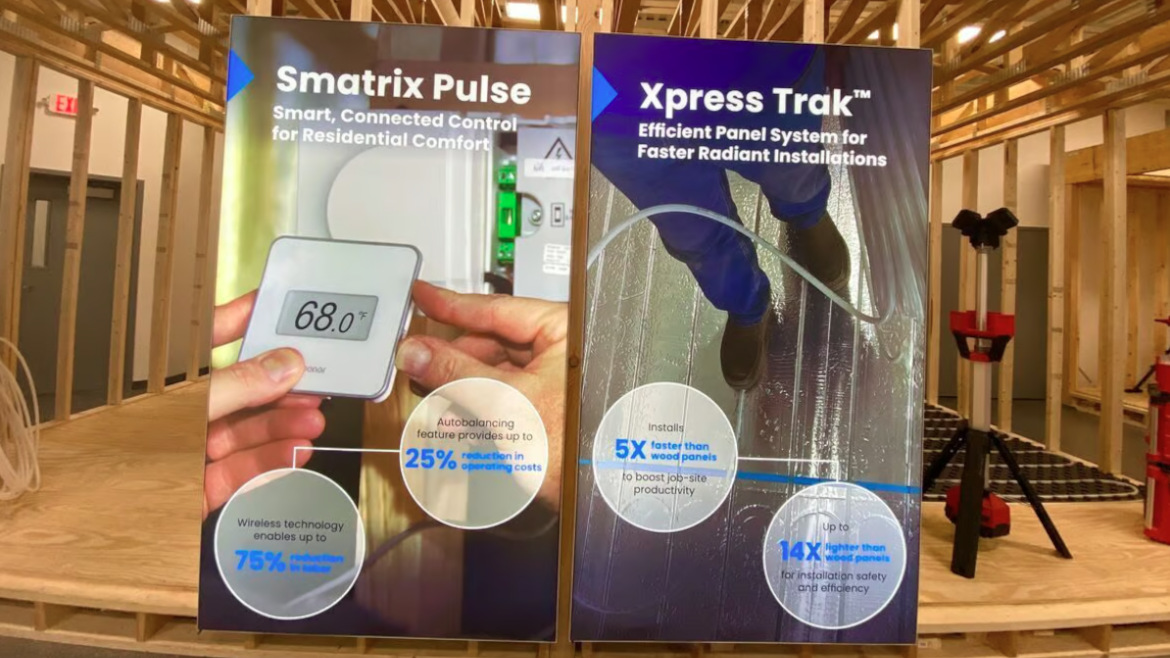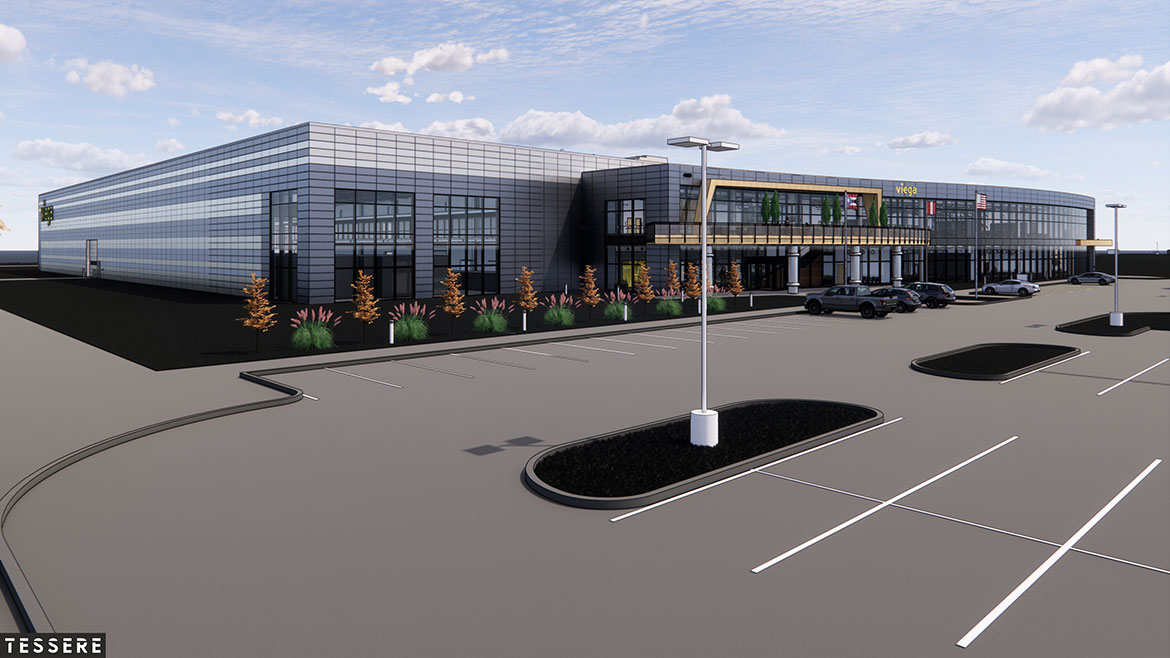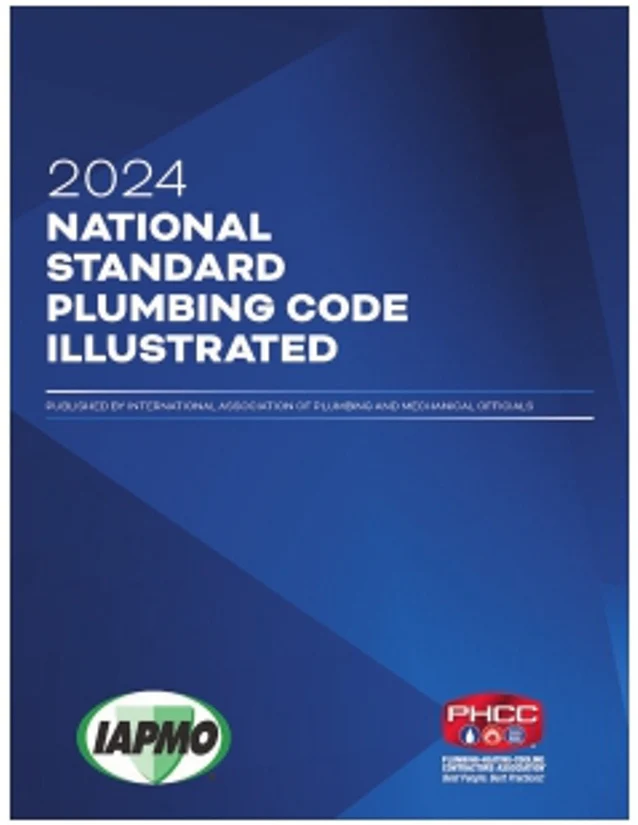The reinvestment in American manufacturing and training
Plumbing industry manufacturers making strategic investments in domestic footprint and training.

Headquartered in Apple Valley, Minnesota, Uponor North America has manufacturing in Apple Valley as well as Hutchinson, Minnesota, along with distribution in Lakeville, Minnesota, which also supports Canadian distribution in Mississauga, Ontario. Images courtesy of Uponor North America and Viega LLC.
In recent years, there has been a significant shift in economic strategy within the United States, focusing on revitalizing the manufacturing sector and investing in workforce training. The plumbing industry is a prime example of this growing trend, with many manufacturers recently announcing manufacturing expansions and the opening of strategically placed learning centers. This reinvestment is seen as a crucial step toward restoring the nation's industrial strength, ensuring economic stability, and maintaining global competitiveness. PM Engineer Chief Editor Nicole Krawcke and Plumbing & Mechanical Editor Natalie Forster sat down with several industry manufacturers to discuss their efforts, including Andres Caballero, president of Uponor North America, Mark Hudoba, vice president of building solutions division for REHAU, and Marki Huston, COO of Viega LLC.

The new Uponor Experience Center occupies the company’s previous customer training area, which was originally built in 2000 and renovated in 2010. It is at the center of the North American headquarters campus in Apple Valley, Minnesota, surrounded by corporate offices, an R&D facility and manufacturing space.
Plumbing & Mechanical: Why is domestic manufacturing arguably more important today than ever before?
Caballero: At the high level, there is a big interest on the U.S. to continue to maintain a leadership on economic development and economic growth. Certainly, that will lead to advancements in workforce development as well. But in addition to the economic aspect of that, I think there's a lot of interest in maintaining our leadership on innovation. We do know that manufacturing sites, and R&D sites, lead to accelerated innovation.
Then, of course, it’s a matter of better-controlling supply chains, minimizing disruption and controlling costs. That's at a high level, where you see a lot of more interest on these bringing operations back into the U.S.
Now, for Uponor, I think this is very consistent with our strategy. We have established very strong operations, both from the manufacturing, R&D, customer experience centers, and warehousing, and logistics, in the U.S, and Canada. This is part of our strategy to be very close to our customers and our markets, which is a key part of our differentiation. We are deemed to be one of those products and brands that have one of the best-in-class product availability, and we would like to maintain that.
We're also focusing on maintaining a very strong supply chain resilience. You know what happens when supply chains are disrupted, and we want to stay ahead of that. That's why, not only we bring our operations close to our customers, but also we bring our suppliers close to our manufacturing operations to maintain that supply and resiliency.

Investment on U.S. soil with REHAU
Supply House Times Chief Editor Natalie Forster and Mark Hudoba, vice president of building solutions for the Americas region for REHAU discuss the recent surge of re-investment in U.S. manufacturing facilities and training centers, onshoring and more.
Hudoba: Domestic manufacturing provides three key benefits, all related to adding value for our customers. Speed and agility of delivery — speed of delivery is becoming increasingly important for our customers. In today’s world, one can order a product on Amazon and have it the next day, and in some cases, the same day. Domestic production provides speed of delivery and rapid flexibility to adjust production output to match customer demand fluctuations. Cost competitiveness — domestic manufacturing avoids costly and volatile sea freight costs, thereby providing customers with competitively priced products. And third, Buy America Act — for federally funded infrastructure projects U.S. production can be a requirement.
Huston: Well, I think domestic manufacturing is more important than ever for a couple different reasons.
When we look at what has happened with COVID and our supply chain resilience, manufacturing has taken a tilt to realize we need to on shore more than ever to provide stability in the products we build for our customers.
As as lead times continue to increase with longer supply chains, that's driving a need for continued onshoring, shortening the lead times and increasing the reliability of the delivery times because more and more of our customers need the product to support the projects when they need them and not being able to hold inventory for a long period of time.
Environmentally, as we continue our journey of sustainability here in North America, it becomes more and more important to reduce the carbon footprint. And what that means is localizing as much as we can and reducing the logistics and the carbon and fossil fuels that are required with longer and more international supply chains. Those are important factors that are becoming more part of manufacturing's decision to bring things back into the the U.S. and North American soil.

The Uponor Customer Experience Center also features oversized training area, with both wood and steel structures, where professionals will learn proper hands-on installation techniques.
Plumbing & Mechanical: Do you see trends pointing toward more onshoring of manufacturing back to the U.S.? If so, why do you think that is?
Caballero: I clearly see trends pointing to more onshoring, and it is because of the factors that I said. We want to incentivize economic development. We want to have more close control of our supply chains. We want to also control our innovation. There's a big discussion around intellectual property, and ensuring our most advanced innovations happen inside of the U.S. Certainly, all of those are drivers.
And certainly political stability [plays a role]. You see what's happening with Ukraine, and Middle East, and what is starting to surface in China in terms of discussions about tariffs, and things like that. You'll see a lot of lack of stability in global markets, that, as a manufacturer, it's very important that you maximize the resilience of your operations, and have tight control over that. I see those trends picking up over the next two to three years, but probably not changing over the next 10.

Viega’s new manufacturing facility in Shalersville, Ohio.
Hudoba: While there is currently, a limited amount of transitioning to onshoring of manufacturing of plumbing pipe and fittings, it is likely that the trend will increase.
Once again, this trend is driven by customer needs and what solutions best service the customer. Typically, sourcing of different products is determined by a balance of speed, cost and quality. This can vary by product, as well. For example, pipe products do not have a high density of packing into a shipping container. They have a significant amount of air because of the hollow core of the pipe, as well as the circular coil geometry. This provides local manufacturing a significant advantage. On the other hand, fittings can be shipped with a considerably higher density of product per volume of shipping container, providing a higher potential for overseas production at a competitive cost. An additional cost impact are tariffs imposed by countries such as China, which can also negatively influence product costs. That said, cost is not the sole driver. Product quality and speed of delivery/availability are also critical for our customers. So, again, for different products, it is finding the optimal balance of delivery speed and cost, while maintaining a high level of product quality for our customers.

Discussing the reinvestment in American manufacturing and training
Plumbing & Mechanical and PM Engineer Chief Editor Nicole Krawcke sits down with Andres Caballero, president of GF Building Flow Solutions Americas, formerly Uponor, to discuss the company's strategy when it comes to American manufacturing and training.
Plumbing & Mechanical: What are the primary strategic goals behind investing in new American manufacturing plants and new training centers?
Cabellero: The introduction of the Customer Experience Center on our site is a critical piece of the puzzle because we've been able to bring some of those customers and partners into our site and engage with them in meaningful conversations about innovation, performance and about requirements in the marketplace. It's not just a place for learning and training, but it's also a place to expand collaboration and partnership. We get a lot of ideas from our customers as they visit our Customer Experience Center because there is a very dedicated effort to have a hands-on experience during the time that they spend at the Customer Experience Center. That really leads to a lot of innovative ideas, because we find ways, collectively, to improve. In addition to advancing the plumbing industry with our contractors and partners, we are also very, very well-connected with a lot of trade associations, industry associations, and even trade unions. We play a critical role in ensuring that plumbing and mechanical contracting, as a whole, continues to advance in terms of their capabilities and effectiveness, to be able to meet the demands of the market.
Lastly, the Customer Experience Center is playing a crucial role in maintaining our close connection with our communities. In addition to contractors, customers and partners, we're bringing schools, families, employees and friends of the community, who are starting to learn more about, not just plumbing, but construction in general. That is a key driver for us to accelerate some of our STEM initiatives, which are very important for us to stay connected with the community, and accelerate the next generation of trade into the industry.

Uponor's Customer Experience center features 4,500 square feet of hands-on displays, full-scale residential and commercial training areas and cutting-edge innovation showcases.
Hudoba: Our ultimate goal is to provide value to our customers. As we continue to grow, we continue to invest in expanding our production capacity to meet the growing demand of our customers. In addition, we continue to invest in our U.S. manufacturing facilities to provide high-quality and competitively priced products for our customers. The addition of silos to store our raw materials was one of our recent investments. This provides increased manufacturing efficiencies by shipping and handling our raw material (resin) in truckloads rather than multiple individual boxes of material. These internal efficiencies allow us to offset a portion of the rising costs of raw materials and labor, providing our customers with competitively priced products.
In terms of training, the world is changing. There is clearly a shift in how customers want to receive information and knowledge. Customers are demanding more localized and online training resources. An example of how we have adjusted training to support our customers is utilizing QR codes. We now provide QR codes with some of our products, allowing customers to scan and quickly access short videos that provide fast and easy-to-understand product installation training.
Huston: For Viega, it's very important that we are local to the market. Our customers need our products, but they also need to be able to readily reach out if they need support or technical assistance training. So, we are continuing to invest — we have a factory in Kansas, we have a training center in Colorado and we are currently investing in Ohio. We have a a relatively new training center and experience center in New York, and again, many different areas in the in the U.S. And that will continue because, as we continue to grow, we definitely need to support the markets, be adaptable and be available.
Plumbing & Mechanical: How do these investments align with your long-term vision for the company?
Hudoba: REHAU is an established and leading U.S. plumbing and radiant heating product manufacturer. Continued investments are required to grow, increase value and better serve our customers. Again, adding value for our customers.
We at REHAU have a montra… “Our crew stands behind you.” This is a broad, but critically important view. We aim to provide solutions for our customers, of which, high-quality products is a part. But, our solutions also include infield support, design services, troubleshooting/technical support, etc. Our team stands behind and supports customers with both products and services, anytime, anywhere.
Huston: Long-term, Viega's primary objective is to support the trade that ultimately uses and installs our products, and again, we have very high-quality products that we want to be made in America for our local customers and be readily accessible. But beyond just that piece, Viega is also continuing to invest in state-of-the-art technologies, keeping the efficiencies in our systems and keeping the quality in our products.
Sustainability is one of our focuses, you know, our new Ohio plant is going to be designed from day one to be carbon neutral, which for a manufacturing facility, that is a very big feat. If you are local to the area, we are actually starting to build upwards, so you can see the footprint of the building. We expect to be moving machines in early 2025 and producting product by mid-2025. It's a very tight timeline, but very exciting. Ultimately, it's becuase of our customers and demand in the area that's driving it.
We're committed to our goals and also supporting the long-term success of both North America and the environment.

Investment on U.S. soil with Viega LLC
Supply House Times Chief Editor Natalie Forster and Marki Huston, COO of Viega LLC, discuss the recent surge of re-investment in U.S. manufacturing facilities and training centers, onshoring and more.
Plumbing & Mechanical: What criteria are you using to select locations for new manufacturing plants and/or training centers? Are there specific regions in the U.S. you are focusing on, and why?
Caballero: We look at our footprint very regularly. We do assessments on where we are at, and how can we best serve our customers and our markets. Those assessments are done with a certain frequency. What we have at the moment is a pretty effective way of centralizing some of our manufacturing operations in the center of the U.S.
Also, partnering with key wholesaler partners ensures we utilize their distribution networks — which are vast and broad — across the U.S. and Canada. We work with them to have product available very close to where our customers need it. We assess our coverage, whether it's from our warehousing or from the warehouses and sites of our distributor partners, then we make tweaks on those coverage maps from time to time.
When we are looking into the expansion of manufacturing, as you can imagine, our products require a significant amount of investment from the capital expenses. We have expanded a total of 13 times since we entered the U.S. many years ago in Minnesota. We also looked, from time to time, to expansion of manufacturing locations into other areas of the country. We look at access to market and a skilled workforce. We benefit from the fact that the Midwest, and in particular Minnesota, continues to be a hub for a lot of skilled workforce in many areas. That continues to work for us, but we're looking into other hubs are arising, that we're looking into in terms of skilled workforce.
Hudoba: Our geographical focus is determined by our customers. It is common knowledge that geographical areas, such as Florida and Texas, have the highest number of new housing starts in the U.S. We consider these trends and customer needs across the country to determine how to adjust our plant production, warehouse locations and shipping routes to support all our customers across North America.
Huston: Specifically to the the Northeastern side of the U.S., we have a ton of customers in that area.
That market is continuing to grow and also the workforce that we can partner with to be successful is ample in those areas. From those perspectives, we definitely go where the need is from our customers, but also where we can partner to make a difference with the local communities and then have a substantial workforce, they can help everyone be successful. If we look at the future, there are other areas in the U.S. that also have those same criteria. As our demand grows, which we absolutely plan on, we will continue to use that criteria to pick other locations in the U.S. to invest in.
Looking for a reprint of this article?
From high-res PDFs to custom plaques, order your copy today!











